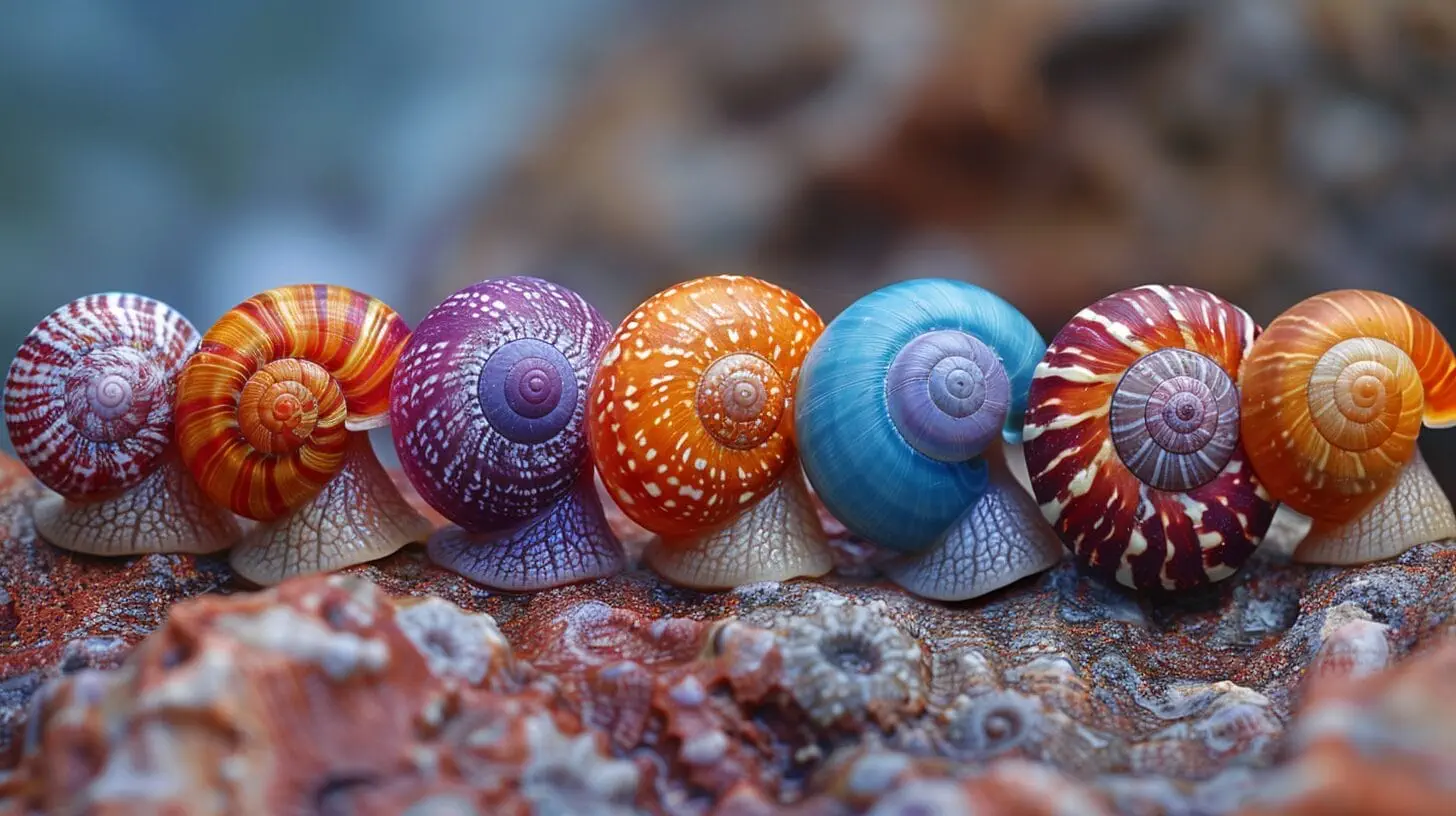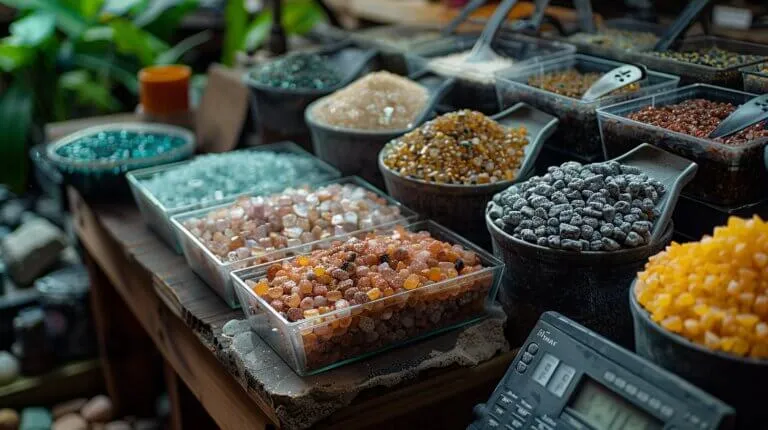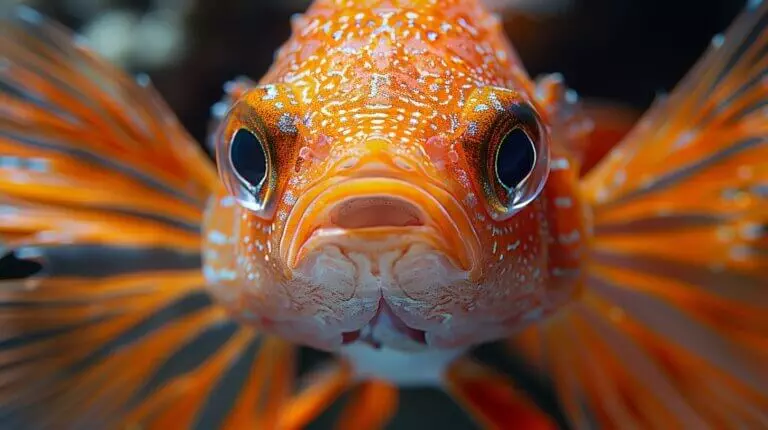Have you ever paused to ponder the intricate color palette adorning snail shells? Amidst the vast spectrum of hues these fascinating creatures display, there lies a compelling tale of adaptation and survival. From the subtle earthy tones to the striking patterns, snail shell colors hold clues to their evolutionary journey and ecological interactions.
So, what color are snails? Let’s unravel the mysteries behind these vibrant hues and explore the hidden world of snail shell colors together. Did you know that snails can come in a wide range of colors, including shades of brown, gray, and even bright orange? Some snail species even have vibrant hues of pink, purple, or blue, creating a truly stunning sight in the natural world. And if you happen to come across a particular species, you may also notice a stunning aquatic crab addition to their habitat, adding even more color to the fascinating world of snails.
Key Takeaways
- Snail shell colors result from genetics and environmental factors.
- Specific genes code for pigments that manifest as yellows and browns.
- Diet, sunlight exposure, and habitat conditions impact color intensity and pattern.
- Color variations aid in camouflage, predator deterrence, and prey ambush.
- Genetic studies identify alleles responsible for snail shell coloration.
Understanding the Basics of Snail Color Variation

When observing snail shell colors, one can appreciate the intricate interplay between genetics and environmental factors. The shades of yellow and brown seen in snail shells aren’t merely random occurrences but are a result of a complex combination of genetic predispositions and external influences.
Genetics play a significant role in determining the base color of a snail shell, with certain genes coding for specific pigments that manifest as yellows and browns. However, environmental factors such as diet, sunlight exposure, and habitat conditions can also impact the intensity and pattern of these colors.
Understanding the basics of snail shell color variation involves recognizing that while genetics provide a blueprint, the environment acts as a painter, adding layers of nuance to the final masterpiece. For example, a snail with a genetic predisposition for a yellow shell may appear more vibrant if it consumes certain foods rich in pigments.
Similarly, exposure to sunlight can enhance or alter the hue of a snail’s shell over time. The colors of snail shells are a beautiful fusion of nature and nurture, showcasing the dynamic interplay between genes and surroundings.
Snail Morphology: Color and Appearance

Snail shell color not only reflects genetic predispositions but also influences the overall appearance of these fascinating creatures. The evolution of snail coloration is a complex interplay between genes, environmental factors, and natural selection. Different species exhibit diverse color patterns, ranging from solid hues to intricate designs. This variation in color and morphology serves various purposes, such as camouflage, warning signals, and mate attraction.
Heredity plays an essential role in determining the color of a snail’s shell. Specific genes control the pigmentation and patterning, leading to the vast array of colors observed in different snail populations. Through natural selection, certain colorations may provide advantages in survival, enabling snails to better blend into their surroundings or signal toxicity to predators.
Methods to Measure and Identify Snail Color

To fully grasp the intricacies of snail shell colors, it’s essential to explore the methods used to measure and identify these vibrant hues. Techniques such as using color charts and spectrometers play a significant role in determining the precise coloration of snail shells. By comparing the color patterns observed with standardized color charts and analyzing the reflected light spectra with spectrometers, researchers can accurately describe and categorize snail shell colors.
Additionally, genetic analysis has emerged as a powerful tool in revealing the genetic basis of snail coloration. Through genetic studies, scientists can identify specific genes responsible for producing pigments that contribute to the diverse array of colors found in snail shells.
The Relationship between Snail Color and their Environment

Understanding the correlation between the environment and snail coloration provides valuable insights into the evolutionary adaptations of these fascinating creatures. Snail color isn’t just an important trait but a result of various factors influenced by their surroundings. Here are some key points to take into account:
- Habitat: Snails adapt their shell color to blend in with their surroundings, helping them evade predators and survive in their specific habitats.
- Camouflage: The color of a snail’s shell plays a significant role in its ability to hide from predators or ambush prey effectively.
- Predation: Brightly colored shells can act as warning signs to potential predators, deterring them from attacking the snail.
- Diet: The food snails consume can impact the pigments they incorporate into their shells, leading to variations in coloration based on diet.
Do Snails and Goldfish Have Similar Color Patterns?
Yes, snails and goldfish do share similar color patterns. Both creatures come in a variety of colors such as orange, black, white, and even calico. However, it’s important to provide proper care for goldfish to maintain their vibrant coloration and health.
Comparing the Color Variations in Different Snail Species

In exploring the color variations among different snail species, we uncover a fascinating array of hues and patterns that reflect their diverse habitats and evolutionary paths. Through a genetic study, scientists have identified various alleles responsible for the coloration of snail shells. These alleles are subject to natural selection, leading to the visually striking and genetically variable shell colors we observe in different species.
Land snails, adapted to terrestrial environments, often display earthy tones like browns and greens, providing camouflage and protection from predators. In contrast, marine snails exhibit a more vibrant color palette, ranging from vivid reds to deep purples, possibly for mate attraction and species recognition underwater.
The most colorful snail species are found in tropical regions, where intense sunlight and rich vegetation may have influenced the evolution of bright and diverse shell patterns. Unusual color patterns in snails, such as stripes or spots, could be linked to specific environmental pressures or unique genetic mutations, adding to the intriguing tapestry of snail shell colors.
Conclusion
In summary, the diverse array of colors found in snail shells is a captivating aspect of their biology.
From genetic factors to environmental influences, snail shell colors play essential roles in their survival strategies.
By understanding the relationship between color variation and adaptation, we gain insight into the complexity of nature’s designs.
Next time you spot a snail, take a closer look at its shell color – you might just uncover a hidden world of beauty and functionality.
Frequently Asked Questions
What is the relation between genetics and the color of snail shells?
The color of snail shells is determined by genetics. Different genetic variations can result in colors like pink or brown, yellow snails, or even gold hues.
How do morphology and color in snails relate to each other?
The morphology or physical characteristics of snails, such as size, shape, and shell structure, often influence the color patterns seen in their shells.
What is the significance of the color of snail shells for researchers and citizen scientists?
The color of snail shells can help researchers and citizen scientists classify and analyze different species and populations, as well as track changes in distribution and abundance.
How do environmental factors influence the color outcome of snail shells?
Environmental factors such as climate change, industrialization, and habitat degradation can impact the coloration of snail shells, leading to changes in their baseline appearance.
Can the color variations in snail shells be attributed to human activities?
Yes, human activities like pollution and habitat destruction can alter the environment, affecting the coloration and distribution of snails in certain regions.





